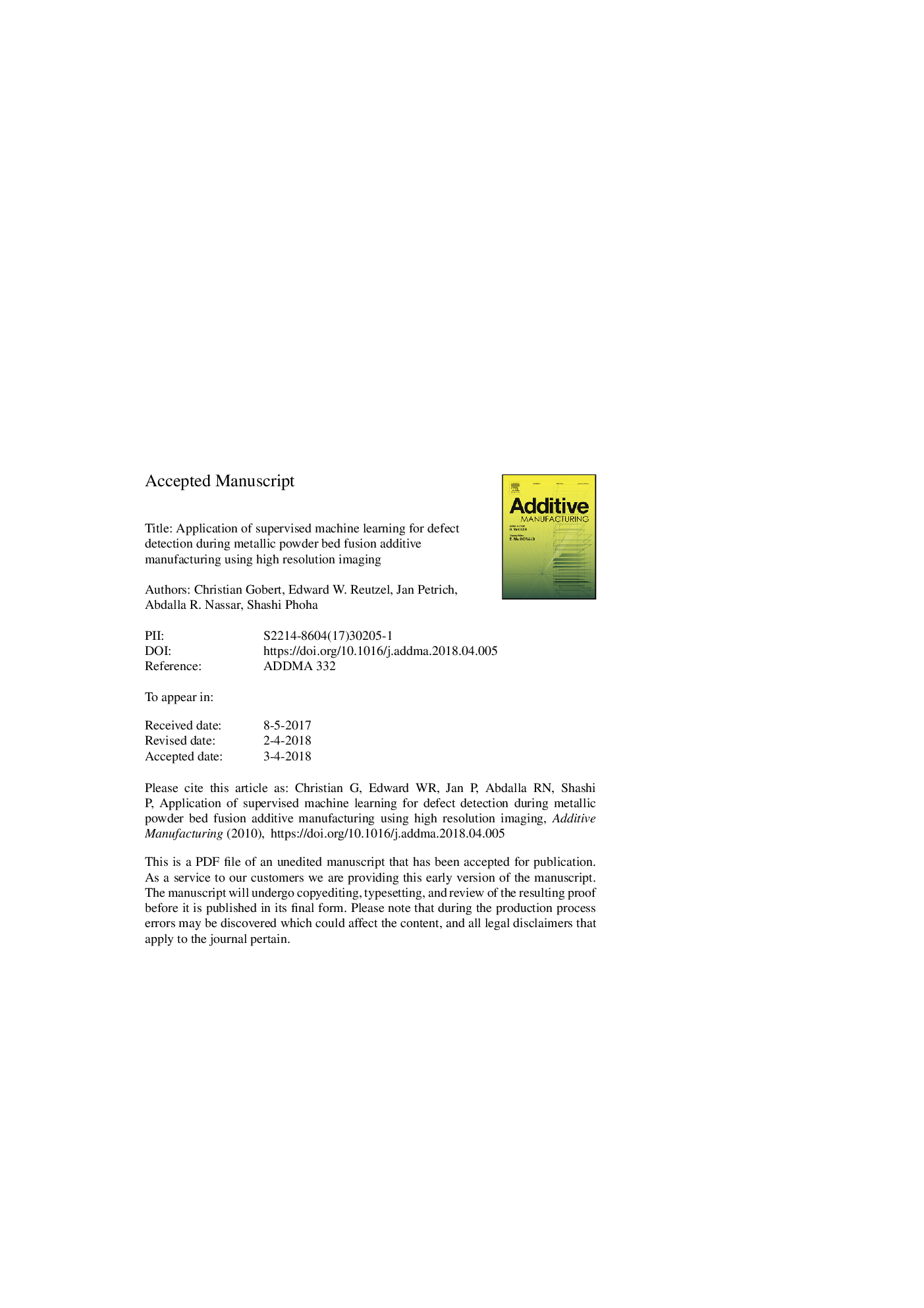| Article ID | Journal | Published Year | Pages | File Type |
|---|---|---|---|---|
| 7205927 | Additive Manufacturing | 2018 | 34 Pages |
Abstract
During the build process, multiple images were collected at each build layer using a high resolution digital single-lens reflex (DSLR) camera. For each neighborhood in the resulting layerwise image stack, multi-dimensional visual features were extracted and evaluated using binary classification techniques, i.e. a linear support vector machine (SVM). Through binary classification, neighborhoods are then categorized as either a flaw, i.e. an undesirable interruption in the typical structure of the material, or a nominal build condition. Ground truth labels, i.e. the true location of flaws and nominal build areas, which are needed to train the binary classifiers, were obtained from post-build high-resolution 3D CT scan data. In CT scans, discontinuities, e.g. incomplete fusion, porosity, cracks, or inclusions, were identified using automated analysis tools or manual inspection. The xyz locations of the CT data were transferred into the layerwise image domain using an affine transformation, which was estimated using reference points embedded in the part. After the classifier had been properly trained, in situ defect detection accuracies greater than 80% were demonstrated during cross-validation experiments.
Keywords
Related Topics
Physical Sciences and Engineering
Engineering
Industrial and Manufacturing Engineering
Authors
Christian Gobert, Edward W. Reutzel, Jan Petrich, Abdalla R. Nassar, Shashi Phoha,
